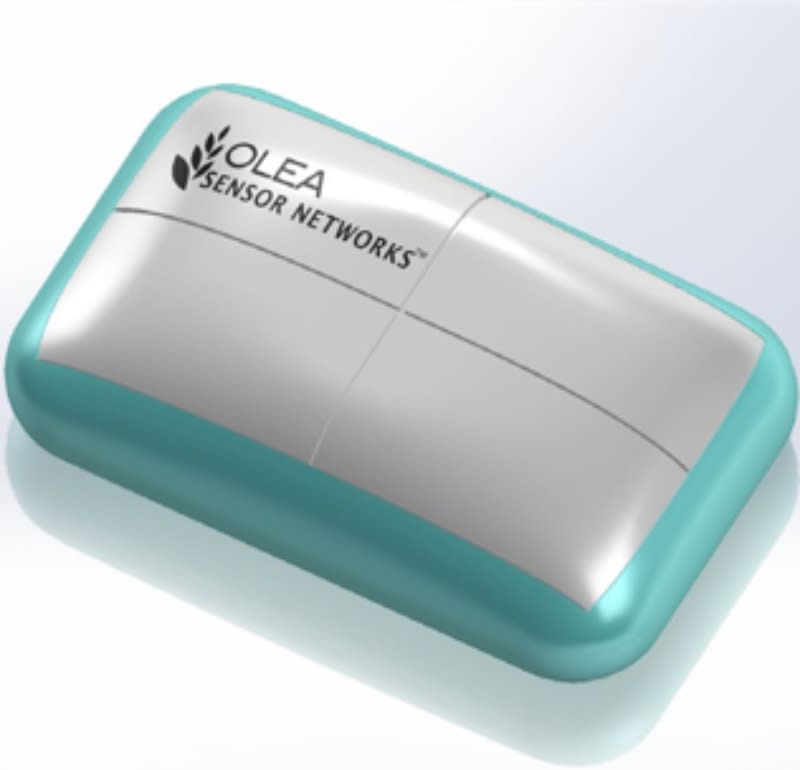LAS VEGAS, NV – When I saw a crowd forming at the entryway of the Sands Hall Convention Center on Wednesday, Day 3 of the Consumer Electronics Show , I started to guess what was causing the attendee traffic jam.
Robot demo? VR headset? Car simulator? Celebrity sighting?
Nope. Just…a guy resting on a bed.
A few feet from the entrance, we all watched a multi-sensor device tracking the man-on-a-mattress. The CES attendee’s respiratory rate displayed – somewhat hypnotically – on a nearby screen.

The demonstration, from a company called Miku, was one of many digital health applications shown on the floor this week at CES. Companies like 3M, Aetna, BlueSmart Technology Corp., Humetrix, InBody, Living in Digital Times, Philips, and SleepScore Labs are using a variety of technologies to monitor everything from your mood to your physical state.
Manufacturers, however, are also showcasing their products' ability to monitor conditions like heart rate and respiratory rate – unobtrusively.
Many health-monitoring products featured at CES this week have small form factors – the kind you can place in a car seat, wear on your wrist, or not wear at all.
“We’re trying to make these types of technologies invisible to the consumer,” Frank Morese, CEO and Founder of the Reno, NV-based analytics company Olea Sensor Networks, told me this week.
Here are three digital health products that stood out to me for their invisibility. So in a sense, for not standing out much at all.
The aforementioned resting man was, in fact, testing a device more designed for a sleeping baby.
With a patent-pending AI and machine learning technology called SensorFusion, the Miku Baby Monitor combines a camera, a radar, and an acoustic sensor.
A camera, a radar, and an acoustic sensor can fail individually. The fusion of the three technology components allows a more reliable picture of a baby’s health and offers the highest probability of detection, according to Miku co-owner Joe Aletta.
And it’s cheaper to go all-in-one.
“Right now, especially if you have babies that are preemies or that have some kind of issues, parents will buy an acoustic sensor that does listening, they’ll buy a camera system, they’ll buy a wearable one, and before you know it, you spend $2,000,” said Aletta.
The optical and wireless sensing track display a baby’s breathing and sleeping patterns – with no wires or wearables.
The Miku Baby Monitor also tracks temperature and humidity levels to ensure the baby's environment is stable. Instant alerts can be sent via mobile device anywhere in the world, and all measurements are done locally on the device.
Heart rate, however, is currently not implemented in the most recent version of the software – a feature the company hopes to add in 2019, said Aletta.
2) Olea Sensor Networks: OleaVision and Quadcorder™️
At this year’s CES, Olea Sensor Networks showcased their OleaVision Gen2™ technology for Life Presence Detection. The platform identifies human and animal presence to a range of 10 meters, even if the subject is motionless or sleeping.
Using a microdoppler sensor running on a 24 Gigahertz frequency, the technology detects slight movements of the body, including respiratory and cardiac behavior – even if you’re not moving.
And it’s safe, according to the company’s CEO.
“The device runs at a very high frequency, so it doesn’t penetrate the body,” said Olea founder Frank Morese.

The technology can be used to ensure that children or pets are not left in overheated cars. OleaVision may be installed in the interior of any vehicle in the roof or over the door of the vehicle cabin. Additionally, alarms can be triggered and sent to the caretaker’s mobile device.
Olea Sensor Networks also used CES to once again demonstrate their OSN Quadcorder™️ – a product that was a CES standout in 2018. The business-card-sized Quadcorder displays the real-time vital sign data collected by the OS-3010 device, one element of the OleaSense platform.
Compatible with all Linux platforms including Raspberry Pi, the device can be worn around the neck and placed up against the chest or back to provide precise heart rates, heart-rate variability, and respiration.
Traits like heart-rate vulnerability are critical measurements that can often forecast emergencies, even death. Such cardiac information from the Olea device can then be sent to a doctor’s office for analytics.
“Medical professionals now can take this and come to us and say, ‘These are the kinds attributes we want to look for, for trends,' and we can apply our machine-learning technology to start looking for them electronically, in real time,” said Morese.
3) Omron Healthcare: HeartGuide
At CES this week, Omron HealthCare debuted HeartGuide, a wearable, FDA-approved blood-pressure monitor.
The device, made in the design of a wristwatch, uses the same oscillometric measurement that you’re used to at the doctor’s office. After the band inflates, systolic, diastolic, and pulse rates are measured within 35-60 seconds.

Tim Sheehan, Director of Drug Wholesale Business Units at Omron Healthcare, has an irregular heartbeat, and he is particularly appreciative of how the wearable monitors for atrial fibrillation.
“With ‘AFib,’ doctors give you a ton of medications,” said Sheehan. “It’s kind of hit or miss, so the more data I can provide my cardiologist, the more he can tweak the medication as needed over time,” said Sheehan.
In addition, the device operates as a step counter, activity tracker, and sleep monitor. You can also sync the technology to your smart device.
Omron has also launched a combination device, HeartGuide Complete, which includes electrocardiogram capability. Down the road, the wearable could include other specifications, says Sheehan, such as pulse oximetry, which measures oxygen saturation in the blood and assists patients with chronic obstructive pulmonary disease (COPD) and heart-failure issues.
Do these products stand out to you? Share your comments and questions below.

